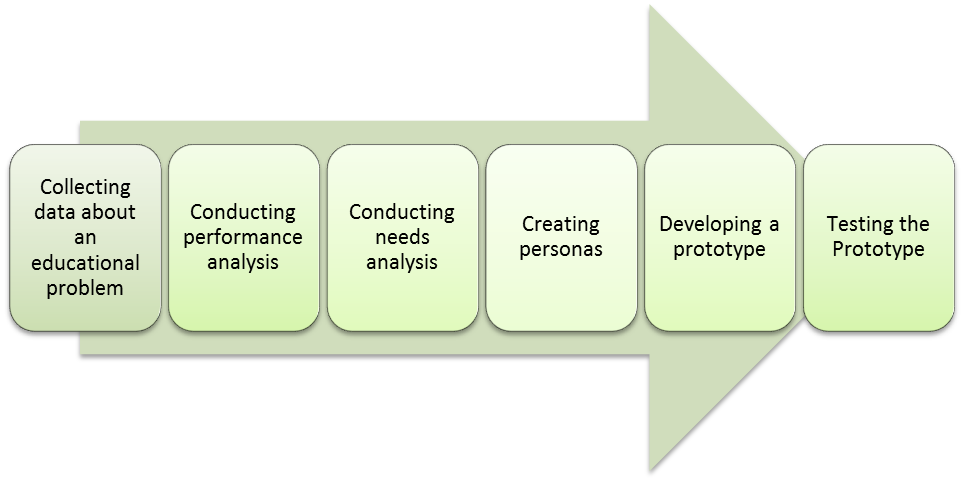EDIT 732 – Analysis and Design of Technology-Based Learning Environment
Description:
Enables design, implementation, and evaluation of technology-based education and training materials using advanced computer-based authoring tools.
Reflection:
This course introduced us to mobile learning and augmented reality in a very constructive approach. We used pedagogical models to design an augmented reality mobile application tool. The design of the mobile application was based on design research principles which involve iterations of design. Below is a representation of the series of tasks that we carried out to reach our desired prototype:
We worked collaboratively in teams to design our prototypes. My team designed an augmented reality mobile application game to solve the problem of history teaching in middle schools. Middle schoolers reported that history is a boring subject to learn, and they reported that they enjoy playing games and using technology. We had collected data from the end users, middle schoolers, and based on or collected and analyzed data, we made design decisions.
This course was a great learning experience to me since I wasn’t familiar with “Augmented Reality” and the design process. Augmented Reality is a new technology that adds a layer of real world to computer generated data or vise versa. Designing an augmented reality game for middle schoolers to learn history is a great way to engage students with real setting while learning history. As an instructional designer, it is important to understand the design process which was clearly vonveyed through this course. This course helped me realize that any tool that is designed is targeted toward a certain end user who should be present and interviewed at several stages in the design process.
Each of the design processes are detailed in the following documents.
Persona1, Persona2, Teacher Persona
Final Presentation

